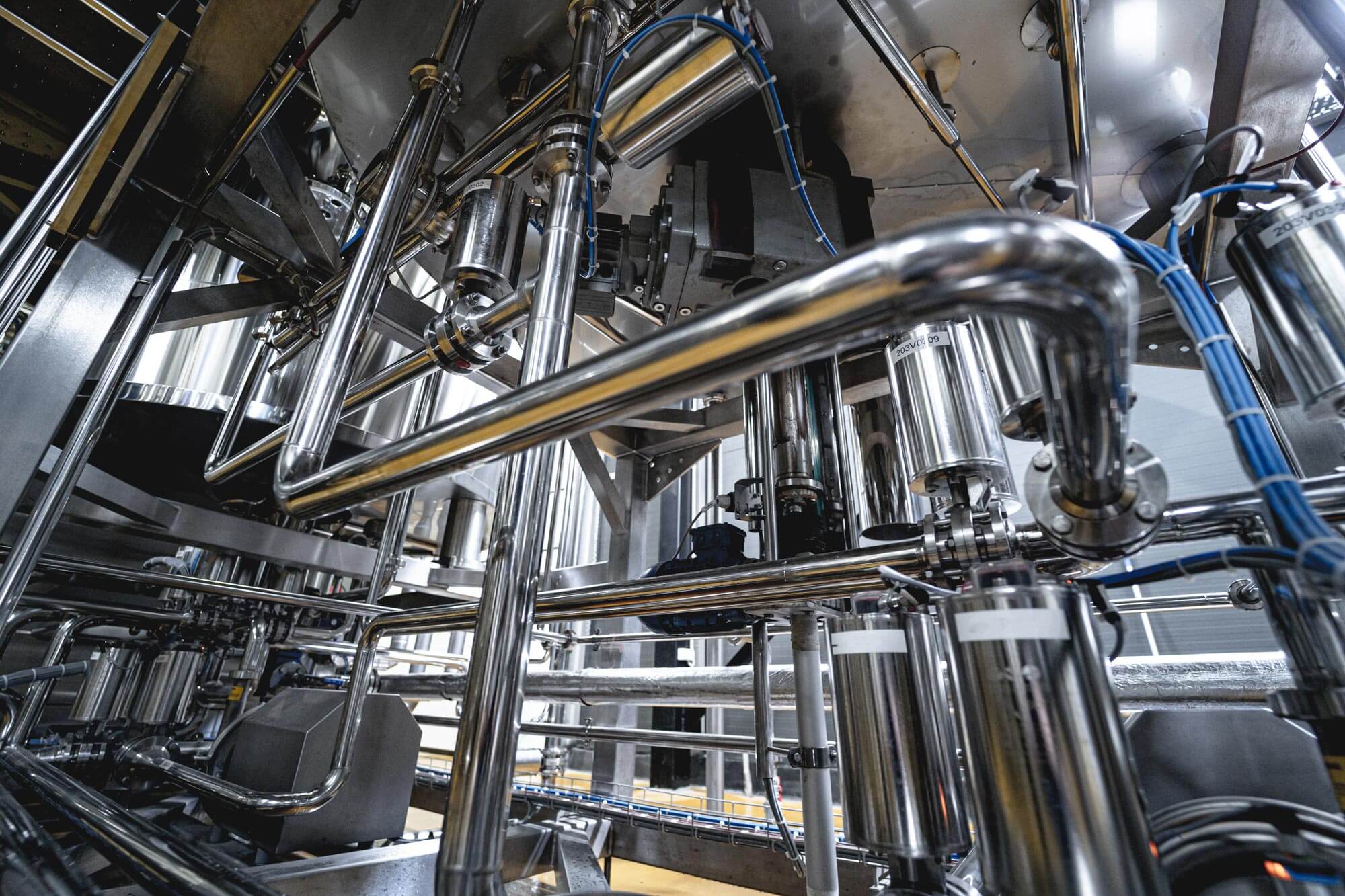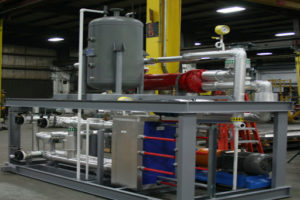Real-Time Monitoring: How DVS Heat Transfer Systems Enable Predictive Maintenance
Wiki Article
The Duty of Heat Transfer Systems in Sustainable Power Solutions for the Future
Heat transfer systems are necessary in the quest for lasting energy services. They maximize thermal energy monitoring, improving the performance of renewable modern technologies. By utilizing mechanisms like transmission, radiation, and convection, these systems lessen power losses. Their role in solar thermal and geothermal applications is especially considerable. As technologies arise, the potential for additional advancements elevates vital concerns concerning future energy techniques. What growths will shape the landscape of sustainable power?Understanding Heat Transfer Equipments

The Importance of Thermal Energy Administration
Effective thermal energy monitoring is important for optimizing energy efficiency and lessening waste in various systems. By regulating temperature level and enhancing Heat transfer procedures, organizations can markedly lower energy intake and functional expenses. Reliable monitoring entails the execution of innovative technologies and practices that check and regulate thermal problems within systems, making certain that power sources are made use of effectively. On top of that, proper thermal power administration adds to reducing greenhouse gas emissions, straightening with international sustainability objectives. It likewise improves system integrity and efficiency, resulting in boosted product quality and longer equipment life expectancy. Eventually, focusing on thermal power monitoring is a vital action towards producing much more sustainable power services and fostering a responsible approach to energy intake in domestic and commercial contexts.Applications of Heat Transfer in Renewable Resource
While different sustainable power resources promise sustainability, the efficient application of Heat transfer plays an important role in their effectiveness. In wind energy systems, Heat transfer is used for generator element air conditioning, improving performance and durability. Geothermal power depends on efficient Heat exchange between the planet's subsurface and the liquid distributing in the system, optimizing power removal. Biomass energy processes also take advantage of Heat transfer, as it aids in converting natural products right into functional fuel with pyrolysis and gasification. Furthermore, in hydropower, preserving optimal temperature levels in storage tanks can boost power output. Each of these applications demonstrates the important importance of Heat transfer systems in improving renewable power technologies, inevitably adding to a much more lasting energy future.Enhancing Solar Thermal Power Performance
As solar thermal power systems remain to progress, enhancing their performance has actually come to be essential for maximizing energy output. Breakthroughs in Heat transfer innovations, such as boosted thermal storage products and cutting-edge Heat exchangers, play a significant role in enhancing efficiency. By using sophisticated products that have remarkable thermal conductivity, systems can catch and move Heat extra successfully. Furthermore, incorporating radar that comply with the sunlight's course guarantees that collection agencies obtain excellent solar exposure throughout the day. Making use of nanotechnology in solar absorbers can better increase energy absorption prices. Moreover, incorporating automatic control systems helps handle and manage temperature levels power circulation efficiently, resulting in lowered losses and improved overall system effectiveness. These enhancements lead the way for more sustainable solar thermal power options in the future.Geothermal Heating: A Lasting Service
Geothermal home heating presents a practical choice for lasting energy, using significant environmental advantages via lowered greenhouse gas emissions. Its performance and cost-effectiveness make it an appealing option to conventional heater. Nonetheless, difficulties connected to implementation should be dealt with to maximize its possible influence.Ecological Advantages of Geothermal
Although conventional home heating methods contribute substantially to greenhouse gas emissions, geothermal heating provides a compelling choice that decreases environmental influence. By harnessing the Earth's internal Heat, geothermal systems make use of an eco-friendly energy source, substantially reducing dependence on nonrenewable fuel sources. This approach generates marginal carbon emissions, making it a cleaner alternative for domestic and industrial heating. Additionally, geothermal systems advertise power effectiveness, as they call for much less power contrasted to conventional heating systems. DVS Heat Transfer Systems. The usage of geothermal power also helps in decreasing air pollution, enhancing regional air high quality and public wellness. As a sustainable remedy, geothermal home heating supports environment adjustment reduction efforts, placing itself as an important component in the shift in the direction of a greener futureEffectiveness and Cost-Effectiveness
Just how does geothermal heating measure up in terms of performance and cost-effectiveness contrasted to standard furnace? Geothermal home heating shows exceptional efficiency, often achieving a coefficient of performance (POLICE) of 3 to 5, implying it creates 3 to 5 systems of Heat for every single unit of electricity eaten. This efficiency equates right into lower operating expense, specifically in regions with stable geothermal resources. Initial installation expenses can be greater than standard systems; nonetheless, long-term cost savings on energy costs and lowered maintenance costs can offset these in advance financial investments. Additionally, lots of governments incentivize geothermal systems through rebates and tax obligation credit reports, boosting their cost-effectiveness. Generally, geothermal home heating becomes a lasting and financially sensible option to even more traditional home heating solutions.Application Difficulties and Solutions
Numerous obstacles can restrain the widespread application of geothermal heating unit, despite their clear benefits as a lasting energy remedy. High initial installation prices frequently prevent house owners and financiers, making financing a significant barrier. Furthermore, the geographical restrictions of suitable geothermal sites limit access in particular regions. Neighborhood policies and allowing processes can also make complex task advancement, resulting in hold-ups. Public recognition and understanding of geothermal systems continue to be reduced, preventing approval. To resolve these challenges, targeted education and learning projects can improve open secret, while federal government motivations can minimize monetary problems. Collaborating with neighborhood authorities to enhance laws may facilitate smoother job approvals, eventually promoting the adoption of geothermal home heating as a sensible, lasting power option.Developments in Heat Transfer Technologies
Developments in Heat transfer technologies play an essential role in enhancing energy performance and sustainability. Advanced Heat exchangers and stage modification materials go to the leading edge of these growths, providing considerable improvements in thermal administration. These innovations not just maximize power usage yet also contribute to lowering environmental impact in various applications.Advanced Heat Exchangers
Advanced Heat exchangers play a necessary role in boosting energy efficiency throughout different applications in sustainable power solutions. These devices promote the transfer of Heat in between two or more fluids, considerably reducing power usage in processes such as industrial heating, cooling, and power generation. Innovations in materials and layout, such as the usage of nanofluids and portable configurations, have actually caused enhanced thermal performance and decreased dimension needs. Additionally, innovations in electronic tracking and control systems permit optimized operation, more increasing efficiency. By lessening waste Heat and taking full advantage of energy recuperation, advanced Heat exchangers add to decrease carbon footprints and support the change towards eco pleasant modern technologies. Their continued advancement is important for accomplishing international energy sustainability goals.
Stage Change Materials
The assimilation of phase change products (PCMs) into Heat transfer modern technologies represents a considerable improvement in power management and performance. PCMs take in and release thermal energy throughout their stage adjustments, allowing reliable temperature guideline in structure materials and power systems. By keeping excess Heat throughout peak durations and launching it when demand boosts, PCMs add to pack shifting and power conservation - DVS Heat Transfer Systems. This ability enhances the efficiency of renewable resource systems, especially in solar thermal applications. Additionally, PCMs can boost the thermal convenience of interior settings, decreasing reliance on traditional home heating and cooling methods. As innovations in PCM formulas continue to emerge, their function in lasting energy remedies is positioned to expand, supplying encouraging opportunities for future research and application
Future Prospects for Heat Transfer in Sustainable Power
As the demand for lasting power solutions proceeds to rise, the duty of Heat transfer systems is coming Learn More Here to be increasingly crucial fit future technologies. Innovations in products and styles are expected to boost efficiency in Heat transfer, reducing power losses in various applications. The assimilation of advanced thermal storage systems, such as stage modification materials and thermochemical storage space, will enable far better management of energy resources. Research study right into nanofluids and biomimetic Heat exchangers may even more maximize thermal performance. In addition, the fostering of wise modern technologies will certainly permit for real-time surveillance and flexible control of Heat transfer processes. These innovations are positioned to considerably contribute to the overall effectiveness and sustainability of energy systems, leading the way for a much more energy-efficient future.Regularly Asked Inquiries
Exactly How Can Individuals Execute Heat Transfer Equipment in your home?

Individuals can implement Heat transfer systems in the house by setting up energy-efficient appliances, utilizing radiant home heating, and enhancing insulation. These measures improve power performance, decrease expenses, and promote sustainable practices in household atmospheres.

What Are the Costs Related To Mounting Heat Transfer Equipments?
The costs related to setting up Heat transfer systems differ commonly, generally incorporating tools, installment labor, and upkeep. Elements such as system type, home size, and regional guidelines considerably affect the overall expense entailed.Exist Federal Government Rewards for Heat Transfer System Installations?
Federal government incentives for Heat transfer system setups vary by region and can consist of tax credit ratings, discounts, and grants. These economic benefits aim to urge fostering, inevitably advertising power performance and minimizing environmental impact within communities.Just How Do Heat Transfer Systems Effect Power Bills?
directory Heat transfer systems notably affect energy bills by maximizing power performance. By boosting the transfer of Heat, these systems reduce power usage, leading to reduced energy costs and producing a more lasting method to energy management.What Upkeep Is Needed for Heat Transfer Equipments?
Maintenance for Heat transfer systems includes regular assessments, cleaning of elements, examining fluid degrees, making certain appropriate insulation, and changing used parts. These jobs help maintain performance, stop malfunctions, and extend the system's go to my blog functional life expectancy.These systems assist in the movement of thermal power from one medium to another, enabling the transfer of Heat for cooling, energy, or heating generation objectives. Geothermal energy depends on effective Heat exchange between the planet's subsurface and the liquid flowing in the system, making best use of energy removal. Furthermore, geothermal systems advertise energy effectiveness, as they need much less power contrasted to standard home heating systems. Advanced Heat exchangers play a necessary role in enhancing power efficiency across different applications in sustainable power services. Heat transfer systems especially affect power costs by enhancing energy efficiency.
Report this wiki page